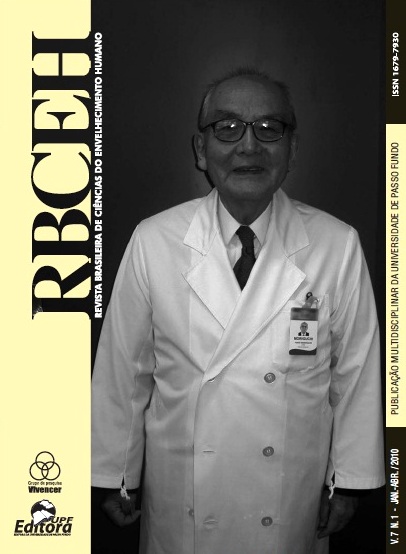Torque peak and i/q relationship of elderly students doing physical exercises at Creati and Dati
DOI:
https://doi.org/10.5335/rbceh.v7i1.390Keywords:
idosos, isocinético, relação isquiotibiais/quadríceps, pico de torque.Abstract
Several research and studies about regular physical exercise are beneficial to physical skill, but a few ones are aimed at The Elderly, that’s why this project has as main objective the analysis of effects of work out classes generalized over flexor and extensor muscles of the thigh of 68 elderly women being senior citizen, Creati and Dati, from São José, Santo Antonio and Jaboticaball neighborhoods, over 60 years old, in Passo Fundo city, comparing the muscular stability between inferior limbs, because when they are debilitated, they may bring about collapses, injuries and even prevent the elderly from doing their activities. By using Biodex isokinetic dynamometer, Multi Joint System 3 Pro computerized model, provided by Passo Fundo University, with Physical Education and Physiotherapy colleges. At Biomechanics Laboratory, it was carried out the measure of maximum strength on ischium-tibial muscles and quadriceps in flexion and stretching movements, at angular velocities of 60º/s, 180º/s and 300º/s, through Torque Peak(Pt), showing muscular instabilities of strength by using deficits shown by ischium-tibials/ quadriceps (RI/q). However, Dati got an average slightly bigger than Creati, nevertheless, statically, only on right and left knee extension at 180º/s and in extension in velocity of 120º/s Dati was superior. It proves that independent of infra-structure that these groups have, it’s possible that the subjects own balanced strength on inferior limbs.Downloads
Download data is not yet available.
Downloads
Published
2011-01-03
Issue
Section
Artigos Originais
License

Todos os artigos estão licenciados com a licença Creative Commons Atribuição-NãoComercial-SemDerivações 4.0 Internacional. A Revista é detentora do Copyright.
How to Cite
Torque peak and i/q relationship of elderly students doing physical exercises at Creati and Dati. (2011). Revista Brasileira De Ciências Do Envelhecimento Humano, 7(1). https://doi.org/10.5335/rbceh.v7i1.390




